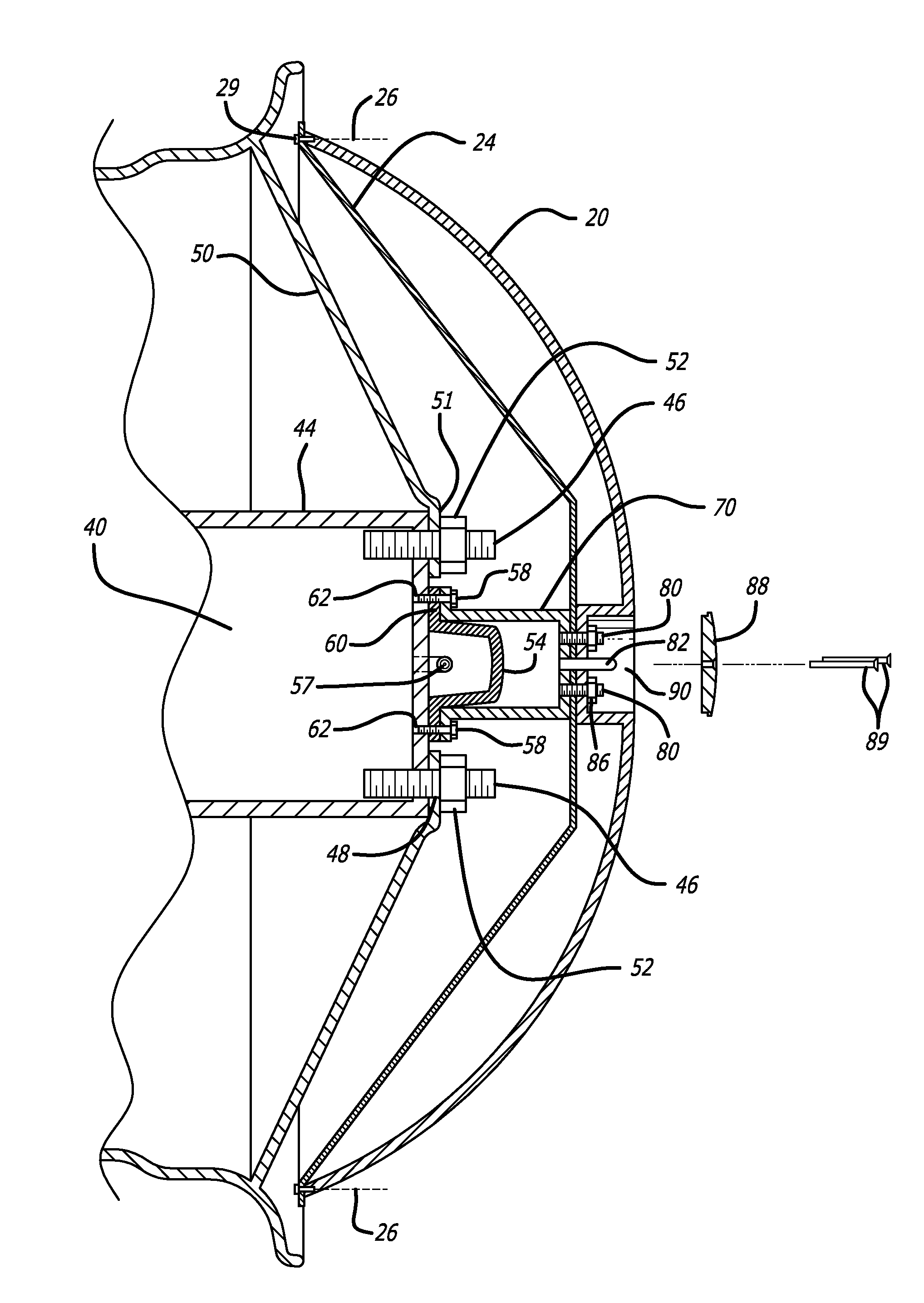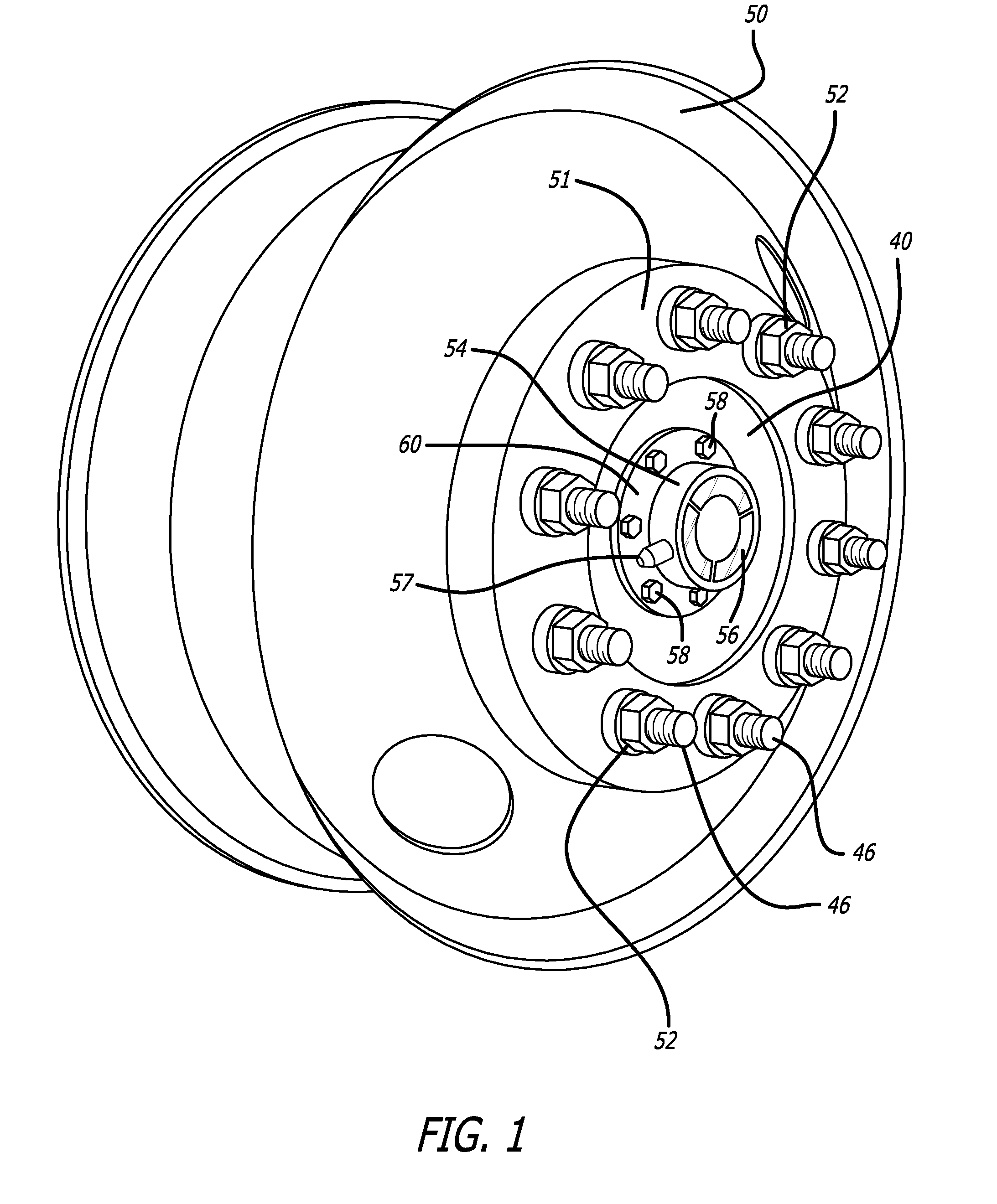Wheel covering system
a technology for ornamental covers and wheels, applied in the direction of wheel protection, vehicle components, hubs, etc., can solve the problems of affecting the integrity of the wheel attachment structure, the device and the method used to attach ornamental covers to the wheels of large vehicles, and the denial of insurance coverage, etc., to achieve the effect of convenient attachmen
- Summary
- Abstract
- Description
- Claims
- Application Information
AI Technical Summary
Benefits of technology
Problems solved by technology
Method used
Image
Examples
first embodiment
[0029]Turning now to a wheel cover assembly of the present invention, as best seen in FIG. 5, an ornamental outer cover adapted for attachment according to the present invention is generally indicated by the numeral 20. Where the cover 20 is intended for attachment to a large vehicle such as a truck or rig, it is beneficially made of cast aluminum, and may weigh as much as about 15 to 30 pounds. This substantial weight gives the cover 20 considerable durability, able to withstand the occasional impact that is inevitable over the lifetime of a cover.
[0030]In a preferred embodiment, the cover 20 has openings (not shown in the figures) that give the cover a visible depth to one viewing the cover attached to a wheel. To enhance this visible depth, a second cover element is provided, being a foil sheet 24 specially made to have enhanced reflective properties on one side, preferably out of aluminum or stainless steel and in the range of 0.5 to 1 mm thick. The foil sheet 24 is placed dista...
second embodiment
[0044]The mounting member 70′ in this second embodiment is exemplified best in FIGS. 7-8. The mounting member is not formed from a cylinder as in the previous embodiment, but in this case may be fabricated from a flat metal plate which is then bent to a shape suitable for spanning over a bulbous axle cap 54′ covering the driving wheel hub 44′, as exemplified in FIGS. 7-8, and 10. Preferably, as in the previous embodiment, the proximal surface 74′ of the mounting member is flat, and vertical, when in use. In a preferred embodiment, the thickness of the flat metal plate is between 5 and 6 mm, to provide suitable stiffness and strength without excessive weight. The extremities of the plate may be shaped to conform to the circular perimeter of the hub 44′. Holes 78′ are provided in the extremities of the plate and positioned to match locations of the axle cover bolts 58′ holding down the bulbous axle cap 54′ on the hub. The mounting member 70′ of this embodiment similarly includes two t...
PUM
 Login to View More
Login to View More Abstract
Description
Claims
Application Information
 Login to View More
Login to View More - R&D
- Intellectual Property
- Life Sciences
- Materials
- Tech Scout
- Unparalleled Data Quality
- Higher Quality Content
- 60% Fewer Hallucinations
Browse by: Latest US Patents, China's latest patents, Technical Efficacy Thesaurus, Application Domain, Technology Topic, Popular Technical Reports.
© 2025 PatSnap. All rights reserved.Legal|Privacy policy|Modern Slavery Act Transparency Statement|Sitemap|About US| Contact US: help@patsnap.com



